Wood Floorboards Too Thin – What Now?
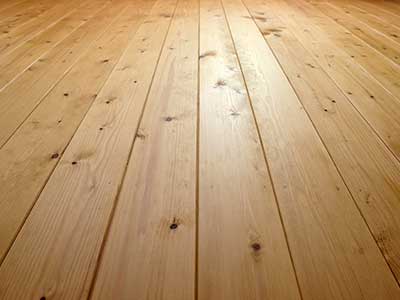 One of the major benefits of owning a real wood floor is not just how beautiful it is or how durable it is. One of the main advantages of real wood flooring is the fact it can be completely renovated and made to look like brand-new that just has been installed.
One of the major benefits of owning a real wood floor is not just how beautiful it is or how durable it is. One of the main advantages of real wood flooring is the fact it can be completely renovated and made to look like brand-new that just has been installed.
The renewed appearance and condition is achieved thanks to some of the most popular services in the industry - wood floor sanding and refinishing. Wood floor sanding and refinishing provide you with the opportunity to completely revive the original look of every floor or dramatically transform it and make it look like something new.
You can change the finish of the floor, change the colour to better match with the rest of your interior, remove all surface imperfections and minor issues that can make your floor appear worn and old and even affect its condition. In a nutshell, no matter the reason behind it, you can always opt for wood floor sanding, refinishing or staining. Or do you?
Not All Wood Floors Are Created The Same
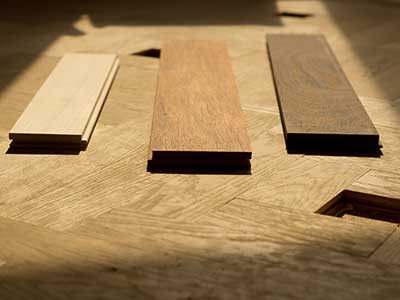 Different wood floors are made differently. First of all, you have different types of real wood flooring that include solid wood, engineered wood, and parquet flooring. From this point on, there is a difference even within the same wood flooring type category.
Different wood floors are made differently. First of all, you have different types of real wood flooring that include solid wood, engineered wood, and parquet flooring. From this point on, there is a difference even within the same wood flooring type category.
Some real wood floors are made thicker and sturdier, while others are lighter and more flexible. Add to all this the fact that real wood floors come made out of different wood species, some of them being naturally denser and solid, while others are softer. With all this in mind, it is safe to say that not all wood floors will wear out the same and not all real wood floors could be re-sanded the same amount of times in their lifetime.
Sanding of Different Types of Floors
In general, solid wood and parquet floors can be sanded more times in their lifecycle compared to engineered wood flooring, because solid wood and parquet floorboards are cut entirely from a piece of timber. In the case of engineered wood, this is an advanced wood flooring material that is made out of a core of softwoods or plywood and a top layer of hardwood that is called lamella.
The lamella layer comes with different thickness, mainly determining the overall price of the product but also how much it can be sanded in the floor's lifecycle. When it comes to engineered wood, these floorboards can be sanded a couple of times or a maximum of three times in its lifecycle. In contrast, solid wood and parquet floorboards can be sanded up to five, even six times in their lifetime, especially when it comes to high-quality and very sturdy floors.
The Risks of Over-Sanding
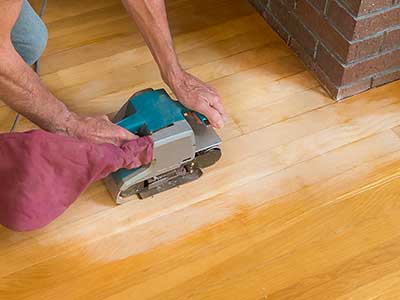 Generally by the industry traditional pine floor boards are considered risky to sand when their thichkenss falls below 15mm. For the other types of floor it is mainly the thickness of the flooring above the tongue and groove joint falls below 2mm.
Generally by the industry traditional pine floor boards are considered risky to sand when their thichkenss falls below 15mm. For the other types of floor it is mainly the thickness of the flooring above the tongue and groove joint falls below 2mm.
Over-sanding is one of the wood floor sanding most common mistakes. It sometimes happens to DIY-ers with no previous experience at wood floor sanding and maintenance. Over-sanding happens when a floor is sanded too deep and for too long at one particular spot and this creates an uneven surface of the floor.
Over-sanding is also the process of sanding a wooden floor that is already too thin and cannot be sanded anymore. Every sanding process strips off wood from the surface of the floor along with the old finish. Sometimes the surface of the floor is way too worn, damaged, and scratched, therefore a bit more of the bare wood underneath the finish should be stripped off. This is recommended when the surface imperfections penetrate the finish and affect the bare wood underneath.
Once you sand the surface of the floor too many times, you will reach out to the point when the floor is beyond sanding and it is already too thin. Continuing to sand the floor at this point is not recommended. Since the wooden floorboards are already too thin, they are at a high risk of damaging and breaking. In addition, over-sanding also causes an effect similar to "glazing" the wood, which means it will become practically impossible to apply a finish and stain evenly and get full and uniform coverage.
What To Do When The Floorboards Are Too Thin
Now, since there is no point to continue sanding the floor when the floorboards are already too thin, but you also cannot continue living with a scratched and destroyed floor, there is only one thing left to do for you - replace the floor and invest into a new one. In fact, a replacement of the old floor with a new one is not that messy, stressful, time-consuming, and expensive as you may expect. Leave the project in the reliable hands of experienced professionals and you will be able to enjoy perfect results very soon and still be able to not break the bank along the way. When it comes to the installation of a new wooden floor, you have two great options to choose from.
Installation Of A New Floor
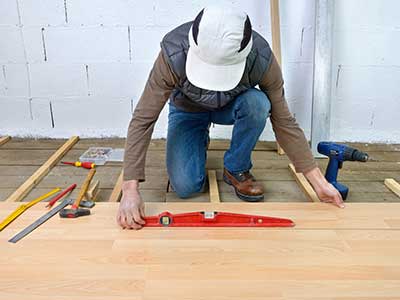 New wood flooring is always a wonderful investment. It is an investment that adds value to the property, brings elegance, style, cosiness, and warmth to your home. Real wood flooring worth every penny, it is durable, hard-wearing, long-lasting and if you maintain your floor properly, it will last up to a whole century and still look and feel amazing.
New wood flooring is always a wonderful investment. It is an investment that adds value to the property, brings elegance, style, cosiness, and warmth to your home. Real wood flooring worth every penny, it is durable, hard-wearing, long-lasting and if you maintain your floor properly, it will last up to a whole century and still look and feel amazing.
When it comes to a new wooden floor, you can either opt for prefinished one that comes already sanded and with a finish applied at the factory, or you can go for unfinished wood floorboards.
As the name suggests, unfinished floorboards should be sanded and finished on-site. This is something many people look down on because the additional sanding and refinishing services come at an additional cost and often mean additional stress, time, and disruption to your day-to-day life. However, unfinished wood flooring also has its fans, because it allows the opportunity for unleashing one's creativity and creating a floor with unique design and appearance.
Installation of Reclaimed Wood
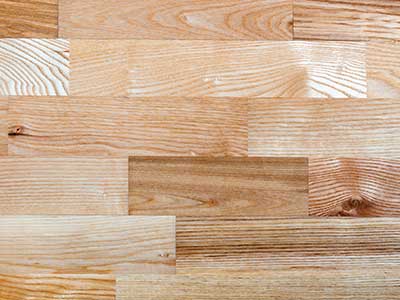 Reclaimed wood flooring gains more and more traction in recent years, mainly because of the reason it is an eco-friendly and sustainable alternative to new wooden floors.
Reclaimed wood flooring gains more and more traction in recent years, mainly because of the reason it is an eco-friendly and sustainable alternative to new wooden floors.
Reclaimed wood is sourced from old buildings and houses. It is then installed in your home the same way as you would do with new wooden flooring.
Reclaimed wood is highly sought after not just because of the fact it is a sustainable and environmentally friendly alternative, but also because of the fact that it comes with its own, very unique patina and old-world charm. Unfortunately in most cases the reclaimed wood needs to be resanded after installation which can add up additional costs to your project.